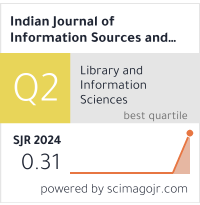IoT Integrated Accelerometer Design and Simulation for Smart Helmets
DOI:
https://doi.org/10.51983/ijiss-2023.13.2.3862Keywords:
MEMS, Piezoresistive, Concussion, Rotational AccelerometersAbstract
This article delves into the transformative potential of micro-electromechanical systems (MEMS) accelerometers, particularly their role in revolutionizing helmet safety. Accelerometers, ubiquitous in vehicle manufacturing, computer technology, and audio-video systems, play a crucial role in measuring acceleration. This work focuses on the design and simulation of a rotating accelerometer integrated into football helmets. The introduction of rotational acceleration addresses specific challenges in detecting and mitigating brain injuries that linear accelerometers may encounter. Additionally, the article explores the concept of piezoresistive football helmets, designed to resist force and reduce the impact of concussions. Piezoresistive helmets, designed to resist force and minimize the impact of concussions, when augmented with Internet of Things (IoT) capabilities can create a comprehensive smart safety solution. The incorporation of IoT sensors and connectivity into piezoresistive helmets enables real-time monitoring and data analysis of impact forces. This integration not only enhances player safety by providing immediate insights into potential risks but also opens avenues for injury prevention strategies. Leveraging COMSOL simulation software, this research not only conceives but also realizes the innovative integration of rotational accelerometers and piezoresistive materials in football helmet design, advancing safety standards in sports technology.
References
Development and analysis of the vertical capacitive accelerometer. Sensors and Actuators A, 119, 8-18.
Beeby, S., Ensell, G., Kraft, M., & White, N. (2004). MEMS mechanical sensors. Artech House.
Higgins, M., Halstead P. D., Snyder-Mackler, L., & Barlow D. (2007). Measurement of impact acceleration: mouthpiece accelerometer versus helmet accelerometer. Journal of Athletic Training, 42(1), 5-10.
Bogue, R. (2007). MEMS sensors: past, present and future. Sensor Review, 27(1), 7-13.
McCrea, M., Barr, W. B., Guskiewicz, K., Randolph, C., Marshall, W. S., Cantu, R., et al. (2005). Standard regression based methods for measuring recovery after sport-related concussion. Journal of the International Neuropsychological Society, 11(1), 58-69.
Roylance, L. M., & Angell J. B. (1990). A batch-fabricated silicon accelerometer. Biomedical Engineering IEEE Transactions, 37(12), 1201-1208.
Atlas, J. B., Young, M., Bertolace, L., Juskiewicz, I., Abrham, Y., Merchant, B. K., et al. (2023). Poster Session: Retinal Changes Associated with Football-Related Concussions and Head Impacts. Journal of Vision, 23(11), 37.
Huang, J. J., Goya, K. N., Yamamoto, B. E., & Yamamoto, L. G. (2023). Comparing Impact and Concussion Risk in Leatherhead and Modern Football and Hockey Helmets. Neurosurgery, 92(6), 1297-1302.
Plaza, J. A., Llober, A., Dominguez, C., Esteve, J., Salina, I., Garcia, J., et al. (1982). BESOI-based integrated optical silicon accelerometer. IEEE Transactions on Electron Devices, 29, 64-70.
Marar, M., McIlvain, N. M., Fields, S. K., & Comstock, R. D. (2012). Epidemiology of concussions among United States high school athletes in 20 sports. The American Journal of Sports Medicine, 40(4), 747-755.
Langlois, J. A., Rutland-Brown, W., & Wald, M. M. (2006). The epidemiology and impact of traumatic brain injury: a brief overview. The Journal of Head Trauma Rehabilitation, 21(5), 375-378.
Gessel, L. M., Fields, S. K., Collins, C. L., Dick, R. W., & Comstock, R. D. (2007). Concussions among United States high school and collegiate athletes. Journal of Athletic Training, 42(4), 495-503.
Daneshvar, D. H. N., Evan, S., Baucom, Z. H., Rasch, A., Abdolmohammadi, B., Uretsky, M., et al. (2023). Leveraging football accelerometer data to quantify associations between repetitive head impacts and chronic traumatic encephalopathy in males. Nature Communications, 14(1), 3470.
Ghiles, C. W., Clark, M. D., Kuzminski, S. J., Fraser, M. A., & Petrella, J. R. (2023). Changes in resting state networks in high school football athletes across a single season. British Journal of Radiology, 96(1144), 20220359.
Michael, H. P., David, H., Lynn, S. M., & David, B. (2007). Measurement of Impact Acceleration: Mouthpiece Accelerometer Versus Helmet Accelerometer. Journal of Athletic Training, 42(1), 5-10.
Lawrence, M. L., Rosanne, N., John, S., Carl, L., Chris, R., & Brian, J. (2001). Do Football Helmets Reduce Acceleration of Impact in Blunt Head Injuries?. Academic Emergency Medicine, 8(6), 604-609.
O’Connor, K. L., Rowson, S., Duma, S. M., & Broglio, S. P. (2017). Head-Impact-Measurement Devices: A Systematic Review. Journal of Athletic Training, 52(3), 206-227.
Greybe, D. G., Jones, C. M., Brown, M. R., & Williams, E. M. P. (2020). Comparison of head impact measurements via an instrumented mouthguard and an anthropometric testing device. Sports Engineering, 23(12).
Dsouza, H., Pastrana, J., Figueroa, J., Afanador, G. I., Montero, D. M., & Sepulveda, N. (2022). Flexible, self-powered sensors for estimating human head kinematics relevant to concussions. Scientific Reports, 12, 8567.
Bethany, R., Abigail, T., Steven, R., & Stefan, D. (2018). Measuring head impacts: accelerometers and other sensors. Handbook of Clinical Neurology, Elsevier, 158, 235-243.
Downloads
Published
How to Cite
Issue
Section
License
Copyright (c) 2023 The Research Publication

This work is licensed under a Creative Commons Attribution-NonCommercial-NoDerivatives 4.0 International License.









